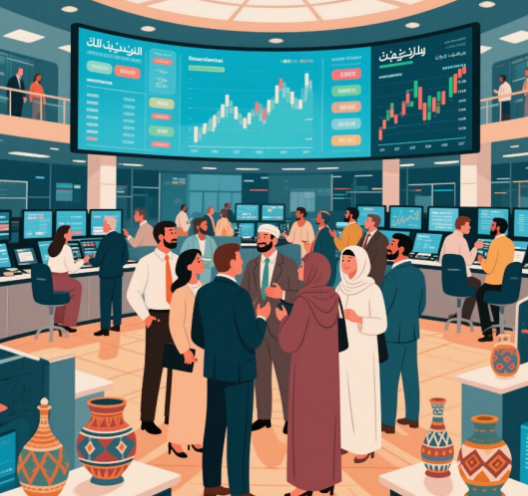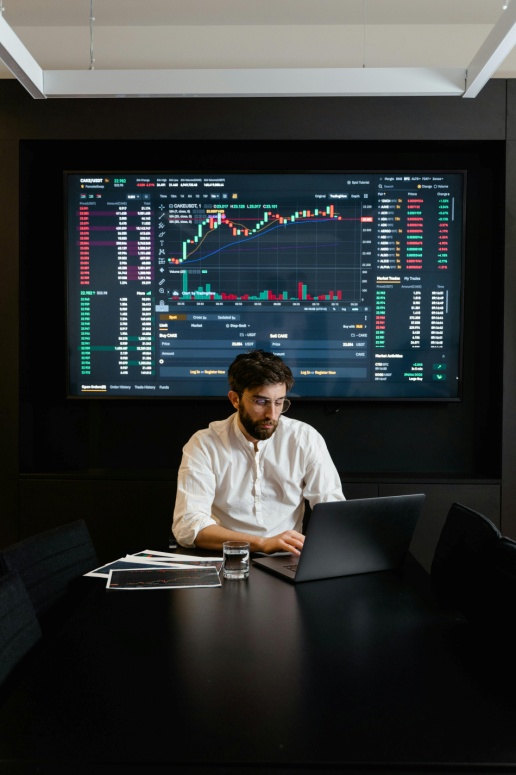Geopolitical Risk and Your Portfolio: How Tensions Impact Stock Markets

In an era of heightened global instability, geopolitical conflicts and trade wars have become defining forces shaping investment landscapes. For millennials and Gen Z investors in Europe and North America, understanding how these risks reverberate through commodity markets and multinational corporations is essential to building resilient portfolios. Let’s dissect the mechanisms at play and explore strategies to navigate this volatile terrain.
Commodities: The First Casualty of Geopolitical Turmoil
Geopolitical tensions often trigger immediate and dramatic shifts in commodity prices, particularly in energy and agriculture. The 2022–2025 Russia-Ukraine conflict exemplifies this: disruptions to Russian oil exports and Ukrainian grain shipments pushed Brent crude prices above $100 per barrel and global wheat prices to a 14-year high . Similarly, the 2025 Red Sea shipping crisis saw natural gas prices surge by 54%, impacting industrial production across Europe and heating costs for households . Such shocks highlight the fragility of energy and food supply chains, making commodities a frontline indicator of geopolitical risk.
Precious metals offer a counterbalance. Gold prices spiked to $2,450 per ounce during the 2025 India-Pakistan standoff, reinforcing their role as a safe haven . Unlike equities, gold tends to appreciate during crises, driven by investors seeking inflation hedges and store-of-value assets. This makes allocations to gold ETFs (e.g., SPDR Gold Shares) a critical component of risk mitigation.

Multinational Corporations: Navigating Supply Chain and Market Disruptions
Trade wars and sanctions force multinational firms to rethink global operations. The U.S.-China tech rivalry, for instance, cost Huawei 28% of its smartphone revenue after semiconductor export restrictions, while European automakers like Volkswagen relocated EV battery production to North America to comply with U.S. IRA subsidies . These adjustments reflect a broader trend toward “China+1” supply chain strategies, but they often incur short-term costs, such as higher production expenses or delayed market launches.
Firms with heavy exposure to conflict zones face acute challenges. German chemical giant BASF saw profit margins shrink by 19% in 2023 due to disrupted Russian natural gas supplies, while aerospace firms like Airbus renegotiated contracts with Middle Eastern clients amid regional tensions . Investors must assess a company’s “geopolitical beta”—how its stock price correlates with global instability—by analyzing revenue diversification and reliance on high-risk regions. For example, companies deriving over 30% of revenue from Southeast Asia may face heightened volatility during U.S.-China trade disputes.
Stock Market Volatility: Sector-Specific and Regional Impacts
Geopolitical risk acts as a volatility multiplier, with disparate effects across sectors and regions. During the 2018 U.S.-China tariff war, the MSCI Emerging Markets Index fell 14%, while the S&P 500 rose 9%, reflecting divergent economic fortunes . More recently, the 2025 EU-UK trade negotiations deadlock caused the FTSE 100 to underperform the S&P 500 by 8% in three months, as exporters like Diageo faced tariff hikes and customs delays.
Sectoral responses vary sharply: defense stocks (e.g., Lockheed Martin) gained 12% during NATO’s 2024 military spending surge, while renewable energy firms like Vestas saw 15% growth amid EU’s “Green Deal” acceleration. Conversely, luxury brands (e.g., LVMH) and tourism-related equities dropped 9% during the 2025 Middle East tensions, as affluent consumers scaled back travel and discretionary spending.
Strategic Portfolio Adjustments for Geopolitical Resilience
To thrive in this environment, adopt a proactive approach:
Commodity Hedging: Allocate 5–10% of your portfolio to gold, silver, and energy transition metals (e.g., lithium) via ETFs or futures. This protects against inflation and supply chain shocks.
Supply Chain Due Diligence: Prioritize companies with diversified manufacturing networks. For example, Taiwan Semiconductor’s Arizona fab or Nestlé’s regional food production hubs reduce reliance on single geographies.
Macro Trend Monitoring: Use geopolitical risk indices (e.g., Oxford Economics) to anticipate sector rotations. Rising U.S.-Iran tensions, for instance, may benefit cybersecurity and defense sectors, while EU climate policies could drive renewables.

Conclusion: Embracing Adaptability in Uncertain Times
Geopolitical risks are not transient but structural features of the modern investment landscape. By recognizing commodities as early warning signals, multinational firms as proxies for global stability, and markets as reactionary ecosystems, investors can turn chaos into opportunity. The key lies in balancing exposure to crisis-resistant assets (e.g., gold, resilient supply chains) with strategic bets on sectors poised to benefit from geopolitical shifts (e.g., defense, renewables). In a world defined by unpredictability, portfolios that prioritize adaptability over rigidity will ultimately withstand the storm.
(Writer:Cily)





